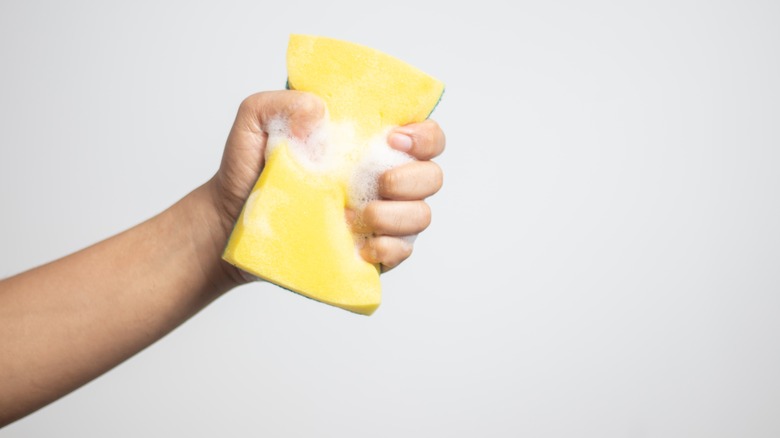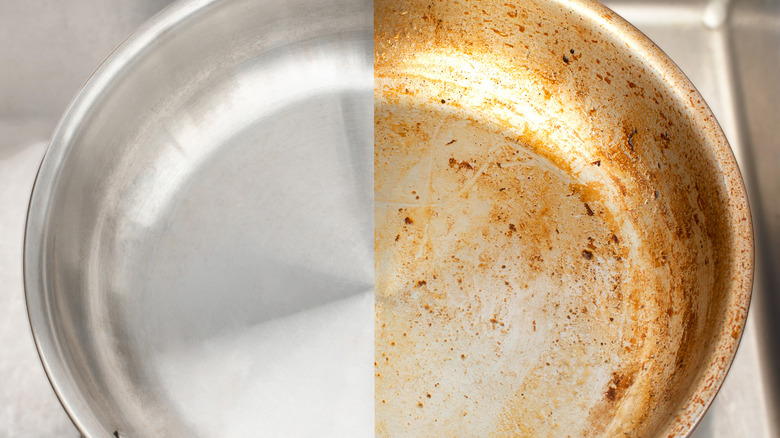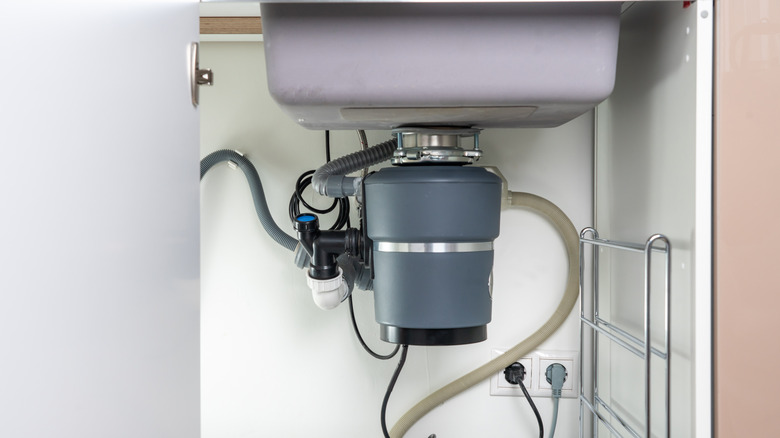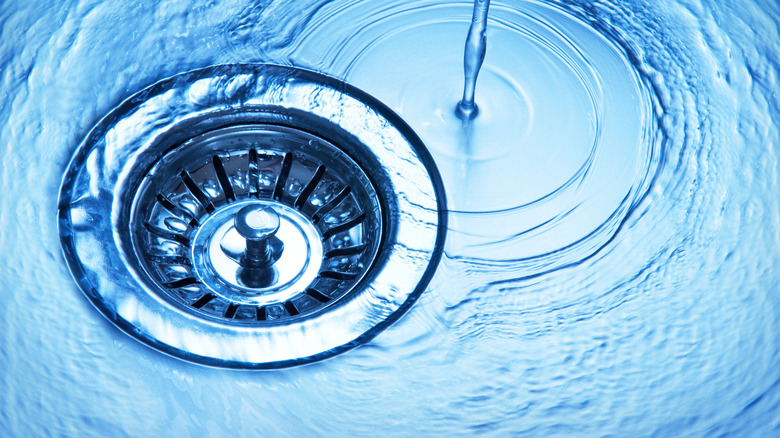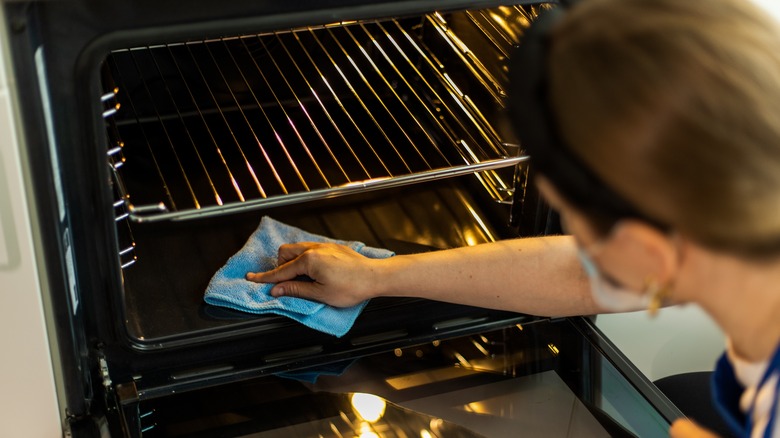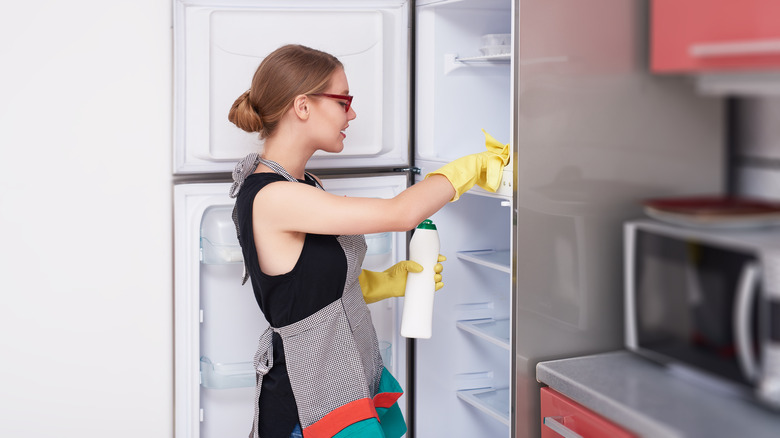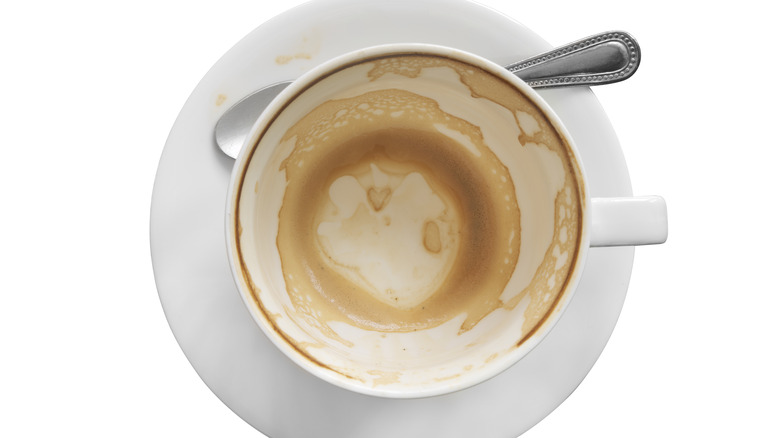Clever Ways To Use Salt In The Kitchen Besides Cooking
Table salt is perhaps one of the most commonly used cooking ingredients. Also called "common salt," you probably rely on this substance for flavoring food, along with pepper and herbs. Aside from cooking, though, you may be surprised to learn that there are literally thousands of other uses associated with this chemical compound. In fact, the Salt Association estimates more than 14,000 uses for this product.
Many of these uses can even extend to other areas of your home. Salt's non-toxic properties also make it especially safe and useful for multiple areas in your kitchen, where you may find yourself cooking and cleaning with salt all at the same time. While salt isn't a cure-all for every kitchen need, you may be surprised at the variety of uses for this natural and inexpensive compound. This can help save you money, while also avoiding a reliance on chemicals that may not be necessary (or even all that safe).
Use saltwater and vinegar to disinfect kitchen sponges
You may have heard that you can sanitize a kitchen sponge in the microwave or in the dishwasher. If you're looking for a disinfecting option, consider using salt to help revitalize your sponge. This involves a saltwater and vinegar soak for a still-usable sponge that is in good shape and doesn't smell, which could indicate bacterial growth.
To make a saltwater solution for your kitchen sponge, Thrive Market recommends combining 3 tablespoons of salt with ½ cup of vinegar in a bowl. Pour one cup of hot water on top, and place the sponge in the bowl for the night. When you wake up the next morning, take the sponge out of the solution and rinse thoroughly under clean water from your tap. The biggest caveat to this method is the time. If you're looking for a quick way to sanitize your sponge, consider placing a wet sponge in the microwave for up to one minute. This method can kill over 99% of bacteria on your sponge, according to a 2007 study by the Agricultural Research Service.
Use salt to help scrub dirty pots and pans
Due to its coarse texture, salt can also be considered a natural scrubbing agent for certain surfaces, including Dutch ovens, pots, and pans. While you still need to clean these items with dish soap, the addition of salt can create a safe abrasive to help target caked-on foods and stains. It can even help save otherwise burnt pans and pots that may have sustained damage from high-temperature cooking. Salt may also be preferable over harsh sponges or other items that could possibly damage the inside of your cookware.
To use this method, use boiling saltwater in the pot or pan you're trying to clean. Once the water has boiled, remove the cookware from your stove top. Take a wooden spatula and gently scrub stains, burnt food, or other caked-on grease from the pot or pan. You can repeat the process, if necessary, until the stain is gone.
Clean out your garbage disposal with the help of salt and ice
If you regularly use your garbage disposal, it's normal for it to smell once in a while. Before you reach for expensive and unnecessary chemicals, consider a natural solution of salt and ice to clean your garbage disposal. Running salt with ice helps to safely clean odor-causing food and build-up from the garbage disposal blades in a matter of seconds.
To use this method, use 1 cup of rock salt and 2 cups of ice cubes, and allow these to run in your garbage disposal for up to 15 seconds at a time. After you turn off the disposal, allow cold water to run for a few more seconds. You should notice immediate results, but you can repeat the process if you still notice a lingering smell. Also, keep in mind that this method won't work if you don't properly care for your garbage disposal to begin with. This includes not putting certain foods down the disposal, such as rice, seeds, and used coffee grounds.
Salt may also help keep your drains clean
Aside from your garbage disposal, you may also be able to use salt to help keep drains clean in your kitchen sink. Making your own DIY drain cleaner with salt may work by removing dirt, debris, and grime that could be stuck along the pipes. The salt solution also acts as a deodorizing agent, similar to the way it works in garbage disposals. It's also a good alternative to chemical drain cleaners, which can be hazardous to both humans and pets due to their fumes and accidental spills. By using a DIY salt drain cleaner on a regular basis, you may be able to help keep your pipes clear without having to resort to harsh chemicals or paying for plumbing services.
To use salt in your drains, combine salt and hot water and simply pour down the drain. You can also try this solution whenever your sink starts to smell. Keep in mind, however, that using salt to clear pipes in your kitchen sink won't be effective if your drain has an active clog. The idea here is to use salt as a preventive measure, not to fix a larger problem that might warrant help from a plumber.
Clean up oven spills with the help of salt
If you regularly cook in your oven, you've probably experienced the aggravation of food and grease spills. What's worse, a slight burning smell in the middle of cooking can indicate a small spill that you can't do anything about until the oven has been turned off and cooled down. By the time this happens, however, you've likely forgotten about the oven spill, and it is caked onto the surface and seemingly impossible to remove. While commercial oven cleaners exist, you may be able to use salt as a way to avoid chemicals while also saving money.
The key to using salt for oven spills is to sprinkle salt on any new soiled areas during cooking to prevent the food from becoming stuck. You can also try this as soon as you're done cooking and after you've turned your oven off. Once the surface cools down, you can more easily wipe the salt-covered spill away. Alternatively, you can create a chemical-free paste made with baking soda and salt to tackle oven spills. Use a combination of ½ cup of baking soda, 3 tablespoons of water, and a bit of salt for a deep-cleaning solution that may remove multiple caked-on stains.
Clean out your refrigerator with salt and lemon juice
One often-neglected spot in the kitchen is the refrigerator. Since you keep fresh foods in the fridge, it only makes since that the spaces you store them in are kept clean too. The problem is that you don't want to use a bunch of chemical products so close to your food. This is another situation where salt can help.
Create a refrigerator-safe cleaning solution by using a cup of salt per gallon of hot water. The salt will dissolve in the hot water, creating a natural cleaning solution. You can also add lemon juice if you prefer a lemony-fresh scent. Remove the contents of your refrigerator and store them safely so that you can clean the decluttered surface. Do not leave perishable items in a non-refrigerated environment for more than two hours. Use a cloth or sponge to apply the cleaning solution to all surfaces, and wipe away with a clean sponge.
Use salt to clean out stains from coffee mugs and teacups
Whether you drink coffee, black or green tea, or herbal teas, all these items eventually leave stains on mugs and teacups. Rather than getting rid of a stained mug or cup, you can help renew the aesthetic appeal by using salt to help get rid of stains that hot water and dish soap alone can't tackle.
To use this method, sprinkle salt onto the stains, and squeeze lemon juice on top. Make sure the entire stain is covered with this combination and allow to sit for up to 15 minutes. You can then use a clean and damp microfiber cloth to scrub the stain off your coffee mug or teacup. If the stain doesn't completely lift, consider repeating the process.
Salt can also be used with ice and water to help clean out your coffee pot. Combine 3 tablespoons of salt with a cup of ice and a little bit of water to the pot before swirling the mixture around. The purpose is to lift coffee stains that often get stuck on the bottom of coffee pots.

